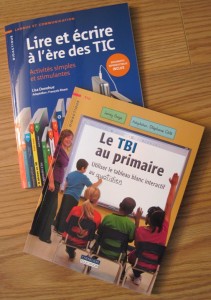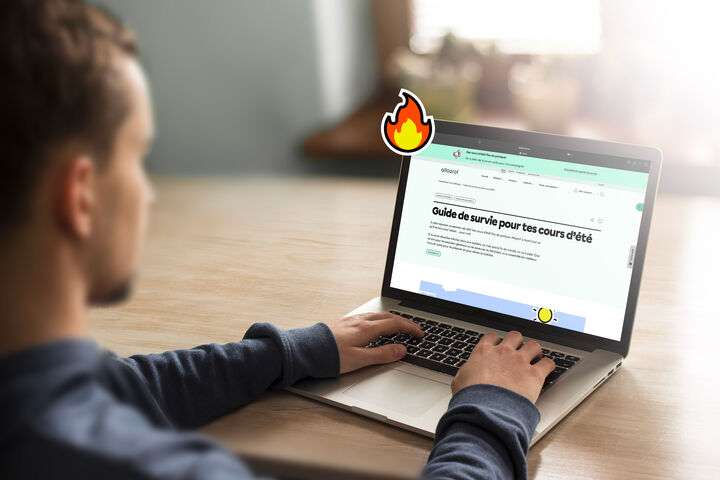 Les technologies de l’information et des communications, communément appelées les TIC, sont de plus en plus présentes dans les classes. Elles le seront encore davantage avec la multiplication des tableaux blancs interactifs dans les écoles. Chenelière Éducation vient donc de lancer deux volumes à l’intention des enseignants branchés… ou en voie de l’être!
Les technologies de l’information et des communications, communément appelées les TIC, sont de plus en plus présentes dans les classes. Elles le seront encore davantage avec la multiplication des tableaux blancs interactifs dans les écoles. Chenelière Éducation vient donc de lancer deux volumes à l’intention des enseignants branchés… ou en voie de l’être!
Le premier, Le TBI au primaire, vise à accompagner les enseignants dans l’utilisation de leur tableau blanc interactif au quotidien. « Aucun appareil au monde, aussi merveilleux soit-il, ne peut améliorer en soi les compétences d’un enseignant, prévient toutefois l’auteure, Jenny Gage, dans l’introduction. Le TBI n’est rien de plus qu’un outil qui, bien utilisé, peut faciliter considérablement l’enseignement. Toutefois, une leçon moins pertinente le demeurera si on se sert du TBI de façon inappropriée. Entre les mains d’un bon enseignant, le TBI peut rendre les leçons stimulantes, interactives et rythmées de façon à intéresser les élèves tout en leur faisant vivre des expériences mémorables. »
Il s’agit d’un livre intéressant pour apprivoiser cette nouvelle technologie puisqu’il commence à la base avec des informations sur ce qu’est un TBI, les différents types qui existent, la manière dont cet outil peut améliorer l’enseignement et les applications en pédagogie. Ensuite, il passe davantage à l’aspect pratique, soit son utilisation comme telle, puis il propose des activités, principalement en français et en mathématiques.
Lecture et écriture
Le second, Lire et écrire à l’ère des TIC, s’intéresse, comme son nom l’indique, à la place des technologies dans la lecture et l’écriture. « Les enseignants préparent leurs élèves pour l’avenir. Ils leur donnent l’occasion de développer des compétences qui leur seront indispensables pour réussir leurs études et entrer sur le marché du travail. Cependant, ces compétences évoluent. Il ne suffira plus aux élèves de savoir lire et écrire; ils devront lire, écrire, analyser, créer, découvrir, apprendre et réapprendre quotidiennement. Ils devront examiner le monde dans lequel ils vivent, entrer en communication avec les autres, et appliquer leurs connaissances à des contextes nouveaux et innovateurs », note l’auteure, Lisa Donohue, dans son introduction.
Le livre est bien vulgarisé et ne perd pas le lecteur dans les détails techniques. L’ouvrage propose de nombreuses activités à réaliser à l’aide des technologies : blogues, wikis, clavardage, balados, Twitter, etc. On y partage aussi les expériences d’enseignants, des commentaires d’élèves, de nombreux liens et des fiches reproductibles.
À lire aussi :
Enseigner avec un TBI? Et puis après?
L’ABC des manuels scolaires numériques
Les tableaux blancs interactifs : fonctionnalités et pédagogie





